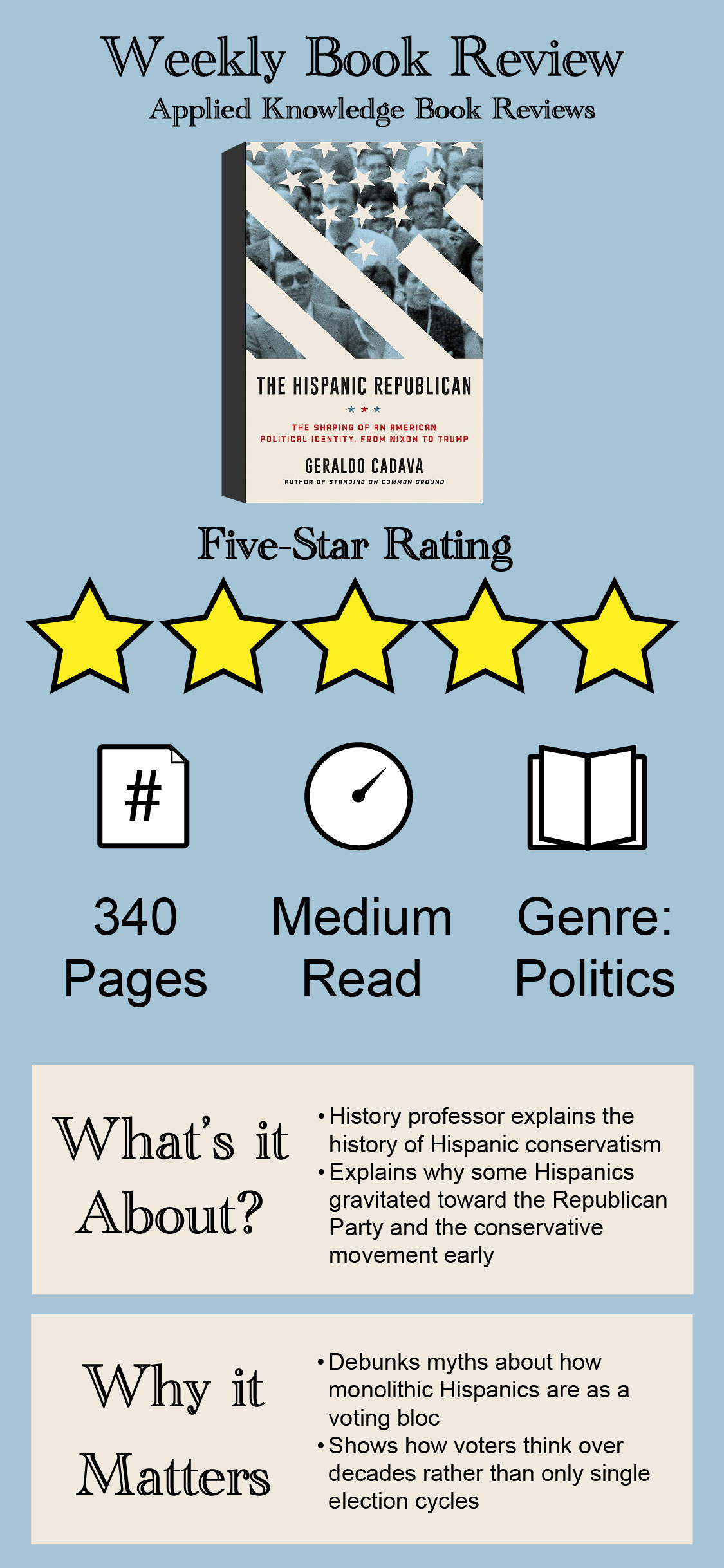Why Hispanic Voters are Gravitating Toward Donald Trump
Hispanic conservatives used to be a minority, but Geraldo Cadava's book shows how Hispanic Republicans became such a large part of the American electorate.
In 2015, Donald Trump launched his presidential campaign with a speech that compared Mexicans to rapists. He made a hardline immigration policy central to all three presidential campaigns and questioned a Latino judge’s ability to rule impartially in a border wall case due to his “heritage.”
And yet across his three elections, Trump improved his performance with Hispanic voters. He received 29% of the Latino vote in 2016, 35% in 2020, and 43% in 2024. (Precise figures vary slightly across surveys.)
Even professional political analysts misunderstood Hispanic voters. The common belief that Hispanics were “natural conservatives” because of high rates of Catholicism was untrue. Reductive analyses also ignored the partisan split among Hispanics resulting from national origin. Trump won about 70% of the Cuban vote in Miami-Dade County and 43% of the Puerto Rican vote in Pennsylvania.
In 2020, Geraldo Cadava explained these trends in his book The Hispanic Republican. It covers the history of Hispanic conservatism when Hispanics still leaned Democratic. It’s an overview of what drew Hispanics to the Republican Party and kept attracting people there even during the Trump years.
Liberal and Conservative Depend on Context
Many people understand that political parties trade issues over time, but the words “liberal” and “conservative” travel, too. In the former Spanish Empire, Hispanics noticed the gap between the development in the United States and the poor quality of life in their countries. Some Hispanics “thought of Spain as the conservative oppressor and the United States as a liberal emancipator.”
So in 1952, even Dwight Eisenhower appeared as a liberal reformer compared to the leftist revolutionaries who terrorized Central and South America throughout the twentieth century.
“Patriotic fervor, religious devotion, and free enterprise became seen as conservative, and Republican, only later in the twentieth century. These complicated associations are part of the story of how partisan identities flipped between the nineteenth and twentieth centuries, part of the difference between conservatism in Latin America and the United States, and part of why it’s dangerous to look into the past for expressions of admiration for free enterprise, or the embrace of Christianity, as markers of an evolving Hispanic conservatism.”
National origin also plays an important role in different voting blocs among Hispanics. Cubans who escaped Fidel Castro overwhelmingly voted Republican while Puerto Ricans whose statehood was championed by Democrats leaned toward that party. That split persists to this day.
However, voting patterns change generationally. First-generation immigrants may be influenced by the politics of their country of origin, but subsequent generations are more heavily influenced by American politics. Later generations become more comfortable voting for Republicans, who are associated with policies that benefit wealthy Americans instead of the lower class that many Hispanic Republicans worked hard to escape.
Voting for the Party vs. Voting for the Man
One of the other shifts over the last 40 years has been a movement from voting for a candidate to voting for a party.
Daniel Garza worked in George W. Bush’s administration from the beginning of his term. A long-time political operative and career Republican, Garza became one of the “leaders of the Hispanic Republican movement in the twenty-first century.” Bush’s focus on “faith, education, and jobs” in addition to his “high-level Hispanic appointments” endeared him and many Hispanic voters to the Republican Party.
Trump’s polarizing beliefs and policies convinced some Hispanic voters to vote for Hillary Clinton in 2016 — but not many. Others, especially the most politically organized, weren’t keen on abandoning a movement that had been built over decades. Choosing the party over its nominee was an important reversal.
“Garza’s idea that Hispanics would vote for the Republican Party because of their conservative principles, even if they didn’t like Donald Trump marks a 180-degree reversal compared with the position they had taken some forty years earlier, when they began to articulate their support for Ronald Reagan. After Reagan announced his candidacy, Hispanic Republicans made the case to other Hispanics, Republicans and Democrats alike, that until recently the Republican Party hadn’t cared about them, but in Reagan they had a man who understood them. They should vote for the man, not the Republican Party.”
Reagan only won about 35% of Hispanics in 1980, but he marked an important milestone in Hispanic conservatism. It was a “shift away from courtship through patronage toward courtship through more ideological arguments about shared values and policy positions.”
While many Hispanics were still wary about how Reagan felt about them personally, the ones who were convinced that Reagan spoke to their values instead of offering social programs became loyal conservatives for decades to come.
By 2016, the ideals of the conservative movement outweighed the candidate representing the movement in the White House.
Voters are Complicated
The Hispanic community is diverse, including recent immigrations and fifth-generation Americans, from different countries and encompassing many religious backgrounds. No single heuristic can explain this crucial voting bloc’s decisions in each election.
Even the additional layers of belief that draw Hispanic voters to the Republican Party are insufficient by themselves. American class concerns layer on top of a complicated history of Hispanic conservatism.
Cadava spotted important trends in 2020 and debunked lazy analyses that have persisted for decades. Even after another election, it’s an important read for understanding the American electorate.


